Real-Time Package Tracking: How It Improves Customer Experience
Discover top real-time package tracking solutions for seamless shipping experiences. Improve your logistics today!
Shipping, Tracking & Notifications
Boost customer experience and reduce support tickets
Realtime order and shipment tracking
Proactive order and shipping notifications
AI-Enhanced Discounted Labels
Predictive pre-purchase estimated delivery dates
Self-Serivce branded order tracking
Effortless experience delivered
Identify and Resolve Order Issues
Realtime order and shipment tracking
Make returns profitable and delight customers
Flexibility to define any return destinations & conditions
Simplify returns for your customers and team
Incentivize exchanges over returns
Returns management made easy for your team
Returns management made easy for your team
Easy claims and smart upsells
Understand why your customers are returning
In-Store & Curbside Pickup
Unify the online and the in-store experience
Hassle-free pickup experience for customers
In-Store dashboard to keep operations streamlined
In-Store and Online orders unified
Drive foot-traffic to your stores
Shipping, Tracking & Notifications
Boost customer experience and reduce support tickets
Realtime order and shipment tracking
Proactive order and shipping notifications
AI-Enhanced Discounted Labels
Predictive pre-purchase estimated delivery dates
Self-Serivce branded order tracking
Effortless experience delivered
Identify and Resolve Order Issues
Realtime order and shipment tracking
Make returns profitable and delight customers
Flexibility to define any return destinations & conditions
Simplify returns for your customers and team
Incentivize exchanges over returns
Returns management made easy for your team
Returns management made easy for your team
Understand why your customers are returning
In-Store & Curbside Pickup
Unify the online and the in-store experience
Hassle-free pickup experience for customers
In-Store Dashboard to keep operations streamlined
In-Store and Online orders unified
Drive foot-traffic to your stores
Boost customer experience and reduce support tickets
Realtime order and shipment tracking
Proactive order and shipping notifications
AI-Enhanced Discounted Labels
Predictive pre-purchase estimated delivery dates
Self-Serivce branded order tracking
Effortless experience delivered
Make returns profitable and delight customers
Flexibility to define any return destinations & conditions
Simplify returns for your customers and team
Incentivize exchanges over returns
Returns management made easy for your team
Equip your team for precise return checks.
Easy claims and smart upsells
Understand why your customers are returning
Unify the online and the in-store experience
Hassle-free pickup experience for customers
In-Store Dashboard to keep operations streamlined
In-Store and Online orders unified
Drive foot-traffic to your stores
Find the answer to all your questions
Take a step by step trip through our functionality to see how we can improve your ecommerce processes.
Explore the most comon questions about WeSupply
Calculate the ROI that WeSupply can bring you
Read actionable articles on how to optimize your post-purchase experience and decrease support tickets
Get inspired by stories of how our customers implemented an effortless post-purchase experience
Wondering if WeSupply is a good fit for you? Read through our use cases to see how we can help you increase conversion & improve CX!
A Deep Dive into Top Companies' Order Tracking & Returns Strategy
Find the answer to all your questions
Explore the most comon questions about WeSupply
Calculate the ROI that WeSupply can bring you
Request a no strings attached review of your current shopping experience and missed conversion opportunities
Take a step by step trip through our functionality to see how we can improve your ecommerce processes.
Read actionable articles on how to optimize your post-purchase experience and decrease support tickets
Get inspired by stories of how our customers implemented an effortless post-purchase experience
A Deep Dive into Top Companies' Order Tracking & Returns Strategy
Wondering if WeSupply is a good fit for you? Read through our use cases to see how we can help you increase conversion & improve CX!
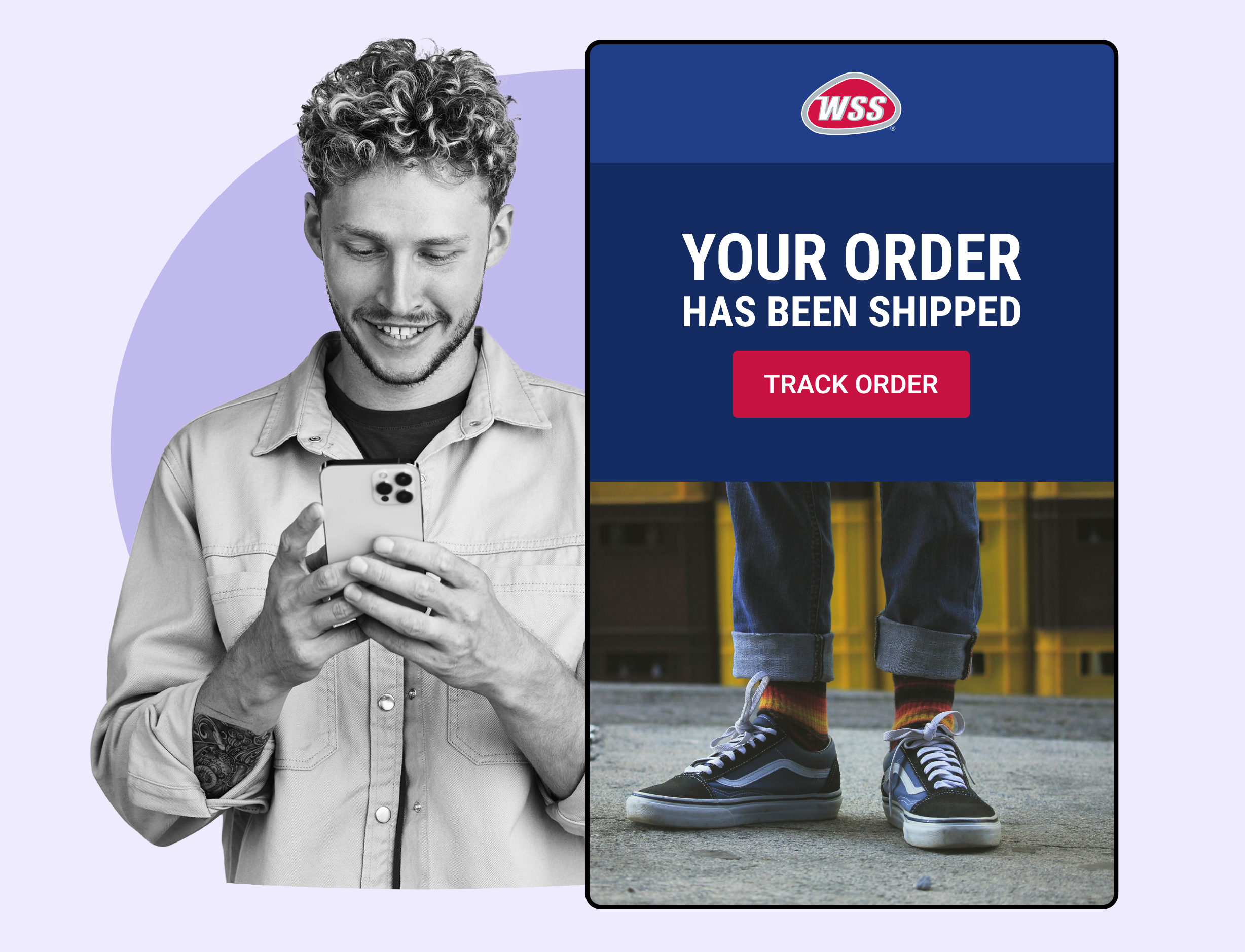
Imagine running an online store. You’ve got great products, a beautiful website, and customers are starting to place orders. But then comes the hard part: getting the products from your warehouse to your customers’ front doors. This isn’t as simple as just putting a box in the mail. You have to figure out the shipping cost, print a label, get a tracking number, and send updates to your customer. Doing all of this by hand for every single order can be slow and full of mistakes. This is where shipping APIs come in.
A shipping API, or Application Programming Interface, is like a secret helper that connects your online store to the big world of shipping carriers and logistics companies. Instead of you having to manually type in information and switch between different carrier websites, the API does all the heavy lifting for you. It’s a game-changer for any ecommerce business, big or small, because it automates the most time-consuming parts of the shipping process. This guide will walk you through exactly what shipping APIs are, how they work, and why they are so crucial for making your online business run smoothly and keeping your customers happy.
At its heart, a shipping API is a set of rules that allows different computer programs to talk to each other. In this case, it allows your ecommerce platform (like Shopify or WooCommerce) to communicate directly with shipping companies (like FedEx, UPS, or USPS). Think of it as a universal translator that lets your store’s computer “speak” to the carrier’s computer.
The core function of a shipping API is to automate key tasks that would otherwise require manual work. For example, when a customer checks out, the API can instantly get the best shipping rates from multiple carriers. It can then generate a shipping label with all the correct information, including the customer’s address and the tracking number. Once the package is picked up, the API keeps a close eye on it, providing real-time tracking updates that can be shared with the customer.
Some of the most important tasks automated by shipping APIs include:
Rate Calculation: Instantly fetching shipping costs from different carriers.
Label Generation: Creating and printing shipping labels automatically.
Tracking: Providing real-time updates on a package’s journey.
Returns: Simplifying the process for customers to send items back.
Address Validation: Checking if an address is correct and complete, which helps prevent shipping delays and lost packages.
The ability to use real-time data is a huge advantage. The API can get live information on shipping costs, delivery times, and package status, so you and your customers are always in the loop. The flexibility to work with multiple carriers means you’re not locked into one service. You can choose the best option for each and every order, whether it’s the fastest delivery or the lowest price.
The benefits of using a shipping API go far beyond simple convenience. They can fundamentally change how you run your business, making it more efficient, more profitable, and better for your customers.
One of the biggest advantages is the automation of manual processes and error reduction. When you’re manually copying and pasting addresses and order numbers, mistakes are bound to happen. These errors can lead to delays, wrong deliveries, and unhappy customers. APIs eliminate this risk by automatically pulling all the necessary information directly from the order. This not only saves time but also ensures accuracy.
Shipping APIs give you access to multiple carriers and rate comparison. Instead of having to go to each carrier’s website one by one, the API can show you all the available options in one place. You can instantly see the cost and delivery time for FedEx, UPS, and USPS, and choose the best one for that specific order. This is a huge help for saving money.
Real-time tracking and customer notifications are essential for building trust. Today’s customers expect to know exactly where their package is. A shipping API can automatically send emails or text messages to your customers with tracking updates, from the moment the package leaves your warehouse to the second it arrives at their door. This transparency makes customers feel confident and happy. In fact, a study by Narvar found that 84% of consumers said they would not return to a retailer after a single poor delivery experience, highlighting the importance of a smooth shipping process.
Cost savings are another major benefit. By allowing you to compare rates and choose the most affordable option for each shipment, a shipping API helps you save money on shipping costs. Some APIs even offer route optimization to find the most efficient and cost-effective delivery path. For growing businesses, scalability is key. As your order volume increases, a manual shipping process will quickly become unmanageable. An API can handle a few orders or thousands of orders a day without slowing down, allowing your business to grow without hitting a wall.
Finally, an API enhances customer trust and satisfaction. A fast, reliable, and transparent shipping experience can turn a one-time customer into a loyal fan. When a customer receives their order on time and is kept informed throughout the process, they are more likely to shop with you again and recommend your store to others.
With so many shipping APIs available, how do you pick the right one for your business? It’s important to consider a few key factors to make sure the API meets your specific needs.
Integration: How easily does the API connect with your current ecommerce platform?
Carrier Options: Does it offer a wide range of carriers that you want to use?
Tracking: Does it provide robust tracking capabilities and customer notifications?
Address Validation: Does it include address validation to prevent shipping errors?
Label Generation: Can it generate labels in the format you need?
If you plan to sell internationally, you’ll also need to consider international shipping capabilities. This includes handling customs forms, calculating duties and taxes, and ensuring compliance with the rules of different countries.
Some popular shipping APIs you’ll encounter are ShipStation, EasyPost, and Shippo. These are “multi-carrier” APIs that connect you to many different carriers at once. There are also APIs offered directly by carriers like FedEx, UPS, and USPS.
When evaluating an API, think about the cost vs. value. Some APIs have a monthly subscription fee, while others charge per-use. Some may offer discounts on shipping rates. You need to weigh the cost of the API against the time and money it will save you in the long run.
Integrating a shipping API with your ecommerce platform is the core step to making it all work. Most APIs are designed to integrate easily with popular platforms like Shopify, WooCommerce, and Magento.
Once integrated, the API can automate a series of tasks. When an order is placed, it can automatically generate a shipping label and send it to your printer. It can then trigger a customer update with the tracking information. When a package is delivered, it can automatically send another notification to your customer, confirming delivery.
The API can also compare shipping rates for each order and select the best option based on the criteria you set (e.g., lowest cost or fastest delivery). While the setup might sound technical, many APIs have simple guides and great developer support to help you get started.
When it comes to shipping APIs, you generally have two main choices: using a carrier-specific API or a multi-carrier API.
Carrier-specific APIs are offered directly by companies like FedEx, UPS, DHL, and USPS. They are excellent if you only plan to use one carrier. They give you direct access to that carrier’s full range of services and features.
However, multi-carrier shipping APIs are becoming more popular. These APIs act as a central hub, connecting you to multiple carriers at once. The main benefit is that you can get a single dashboard to manage all your shipments, regardless of the carrier. This simplifies your workflow and allows for easy rate comparison. Instead of a single tool, you get a whole toolbox. A study by Invesp found that 57% of online shoppers abandoned a cart due to unexpected shipping costs, showing how important it is to have flexible, affordable options.
While carrier APIs can be great for specific needs, multi-carrier solutions are often better for optimizing your operations and finding the best deal for every shipment. They offer flexibility and can help you avoid being overly dependent on a single carrier.
Simplify Shipping with Carrier and Multi-carrier APIs
Book a quick call to see how WeSupply unifies carriers, compares rates, and keeps shipping costs predictable.
Combat inconvenience with proactivity & self service
Book a quick call with our experts to see how WeSupply can help you make returns easy for your customers with a beautiful, self-service solution that makes their experience easier while also providing new ways to lower costs and earn back revenue.
Setting up a shipping API isn’t as scary as it sounds. The key is to have a good plan.
First, you need to plan and prepare for the integration. This involves reading the API documentation to understand what’s needed. You’ll need to get your API key, which is like a password that gives your store permission to talk to the API.
Then, you follow the API documentation and guidelines carefully. This will walk you through the steps of connecting the API to your ecommerce platform. Many APIs have detailed instructions and tutorials to make this process easier.
Finally, it’s crucial to test and troubleshoot before deployment. This means running a few test orders to make sure the API is calculating rates correctly, generating labels properly, and sending the right tracking information. This step is essential to avoid problems once you start processing real customer orders.
You don’t always need to be a technical expert to set up an API. Many platforms offer easy integrations that don’t require any coding. However, for more complex setups, it might be worth hiring a developer or an API expert to ensure everything is done correctly.
Once you’ve set up the API, you can’t just flip a switch and go live. Thorough testing is a critical step to ensure that the API is working as it should.
During testing, you’ll want to check for accuracy, performance, and reliability. This includes making sure that the shipping costs are accurate, the labels are correctly formatted, and that the system can handle a large volume of orders without slowing down. You should test for edge cases unusual orders that might cause a problem to make sure the API can handle anything your customers throw at it.
You also need to think about security and scalability. Is the API secure? Can it handle your business as it grows? Once you are confident in the setup, you can launch the API on your ecommerce platform. You should also coordinate with carriers and make sure you communicate any changes to your customers.
After you’ve launched your shipping API, your work isn’t done. You should continuously monitor key metrics to see how well it’s working. This includes tracking shipping times, costs, and customer satisfaction.
Based on what you learn, you can adjust API settings and carrier options. For example, if you see that one carrier is consistently delivering packages late, you can prioritize other carriers in your API settings. It’s also important to stay up-to-date with shipping API trends and new innovations, like new features or additional carriers.
Finally, make sure you know what to do if something goes wrong. Most API providers offer support resources to help with troubleshooting. Having a reliable support team is crucial for minimizing downtime if a problem occurs.
For many businesses, especially those that are growing quickly, partnering with a shipping API provider can be a smart move. This goes beyond simply using the API; it involves a closer relationship where the provider offers expertise, support, and optimization services.
A good provider will have a deep understanding of the shipping world and can help you find ways to save money and improve efficiency. They can evaluate your shipping needs and recommend the best solutions. When choosing a partner, look at their reputation and experience in the industry.
Consider the cost and value of the partnership. While there might be a fee, the long-term support and guidance can be invaluable. This can include assistance with technical issues, help with optimizing your carrier mix, and ongoing maintenance.
Shipping APIs might sound complicated, but think of them like bridges that connect your store to shipping companies. Instead of doing everything by hand, these bridges let information move quickly and smoothly so packages get where they need to go without delays.
WeSupply takes these “bridges” and makes them even stronger helping ecommerce brands handle challenges, prevent problems, and create a better shopping experience.
Here’s how WeSupply helps:
Spot delays before customers do – Get instant alerts when shipments are stuck or late, and notify customers right away.
Reduce WISMO calls (“Where Is My Order?”) – Branded tracking pages and SMS/email updates keep customers in the loop automatically.
Fix delivery issues fast – Handle undeliverable, lost, or stolen packages quickly to protect profits and customer trust.
Save money on shipping – Access discounted rates from carriers like UPS, FedEx, USPS, and DHL no contracts or minimums required.
Automate label creation – Generate and print shipping labels instantly with synced order data, avoiding errors and wasted time.
Scale communication – Send updates to many customers at once when issues affect multiple orders.
Improve customer happiness – Turn stressful shipping problems into positive experiences with proactive solutions.
With WeSupply, ecommerce businesses don’t just use shipping APIs they maximize them. That means fewer headaches, faster deliveries, and happier customers. 👉 Ready to see it in action? Book a demo with WeSupply today!
With over 150 stores fulfilling online orders, J.McLaughlin often had to split shipments a process that left customers confused and customer service teams overwhelmed with “Where is my order?” calls. Their ERP wasn’t designed to clearly manage or communicate split shipments, leading to frustration and inefficiencies.
WeSupply stepped in to centralize all shipments into a single, branded tracking experience. Customers could now see every package, its status, tracking events, and estimated delivery date all in one place. Proactive notifications further reduced confusion, kept customers engaged, and turned shipping updates into a positive brand touchpoint.
The world of shipping APIs is constantly evolving. As technology advances, we can expect to see new features and tools that will make shipping even smarter. Emerging technologies like Artificial Intelligence (AI) and Machine Learning (ML) are being used to predict shipping delays, optimize routes even further, and handle complex logistics. Blockchain technology is also being explored to create more transparent and secure supply chains.
The number of available carriers and shipping methods is also expanding. Businesses need to stay competitive by keeping up with these advancements and using APIs that can adapt to new trends. Preparing for evolving customer expectations is also key. Customers will continue to demand faster, cheaper, and more transparent shipping, and APIs will be the tool that helps businesses meet those demands.
In today’s ecommerce world, shipping APIs are essential for fast, reliable, and cost-effective delivery.
WeSupply takes this to the next level by combining real-time visibility across 1000+ carriers with proactive delay management, automated label creation, and discounted rates of up to 83%. From handling lost, stolen, or undeliverable packages to sending branded tracking updates by email or SMS, WeSupply keeps customers informed and businesses in control. By turning shipping challenges into seamless experiences, WeSupply reduces WISMO calls, protects profits, and builds long-term loyalty.
For any business looking to save money, improve efficiency, and deliver exceptional post-purchase experiences, WeSupply is the smarter way to unlock the full power of shipping APIs.
1. What is a shipping API in ecommerce?
A shipping API connects your online store with carriers like FedEx, UPS, and USPS. It automates rate calculation, label creation, tracking, and returns making shipping faster, cheaper, and error-free.
2. How do shipping APIs save money for online stores?
Shipping APIs compare real-time carrier rates, helping you choose the most affordable option per order. They also reduce manual errors and wasted time, lowering overall shipping costs.
3. Why are shipping APIs important for customer satisfaction?
Shipping APIs provide real-time tracking updates and proactive notifications. Customers always know where their package is, reducing frustration and “Where Is My Order?” calls.
4. How does WeSupply improve post-purchase customer experience?
WeSupply centralizes tracking, sends branded SMS/email updates, and gives customers real-time visibility across 1000+ carriers, reducing WISMO calls and boosting loyalty.
5. Does WeSupply help reduce shipping costs?
Yes, WeSupply offers discounted rates with UPS, FedEx, USPS, and DHL no contracts or minimums helping businesses save on every shipment.
6. Can WeSupply help with delivery issues like lost or delayed packages?
Absolutely. WeSupply detects delays early, alerts both you and the customer, and provides tools to quickly resolve lost, stolen, or undeliverable shipments.
7. Does WeSupply have an Official Shopify App?
Yes. WeSupply has an Official Shopify App. You can download it and start integrating with your Shopify Store.
8. Does WeSupply have an official Magento extension?
Yes, WeSupply has an official extension for Magento. The WeSupply x Magento integration allows for automating order tracking experiences, reducing customer inquiries, automating shipping email and SMS notifications, and providing a fully branded order tracking experience
9. Does WeSupply have an official BigCommerce App?
Yes, WeSupply has an official BigCommerce App. You can integrate WeSupply with your BigCommerce store to improve your post-purchase customer experience.
Learn How To Create Successful Post Purchase Email Campaigns
Build an effective post-purchase email flow that helps you increase customer satisfaction and drive revenue growth!
Discover top real-time package tracking solutions for seamless shipping experiences. Improve your logistics today!

Master post-holiday returns management with effective strategies that streamline processes and enhance customer satisfaction.
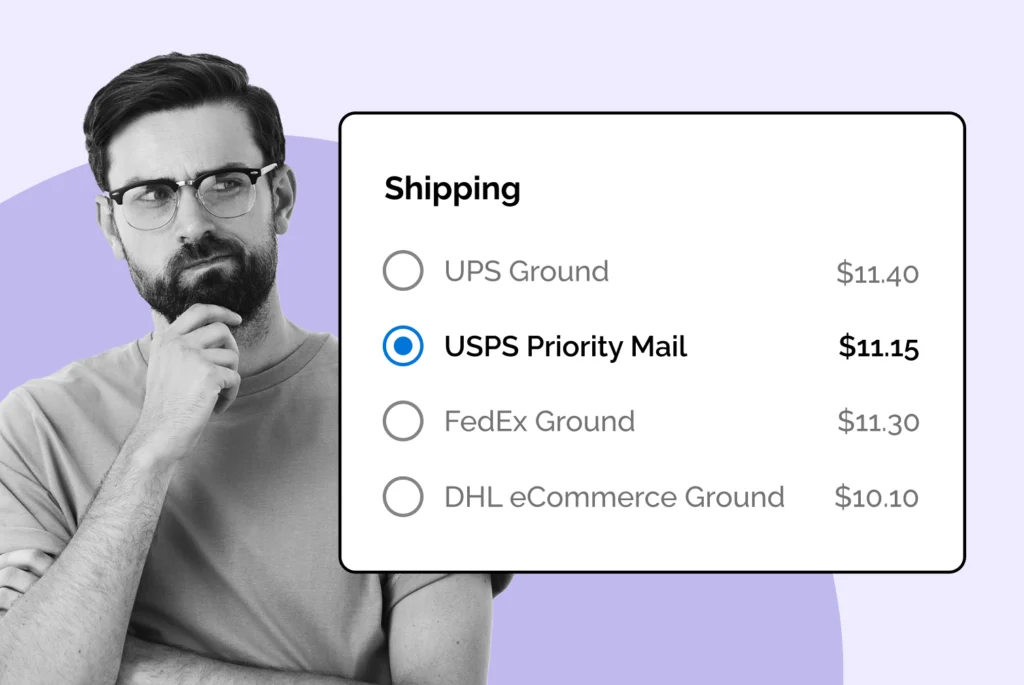
Discover the pros and cons of flat rate and standard shipping to make the best choice for your needs. Read the article now!

Boost holiday sales with AI-driven recommendations this BFCM. Discover strategies to engage customers and increase conversions.

Discover essential strategies to streamline bulk returns handling and enhance efficiency. Read the article for practical tips!
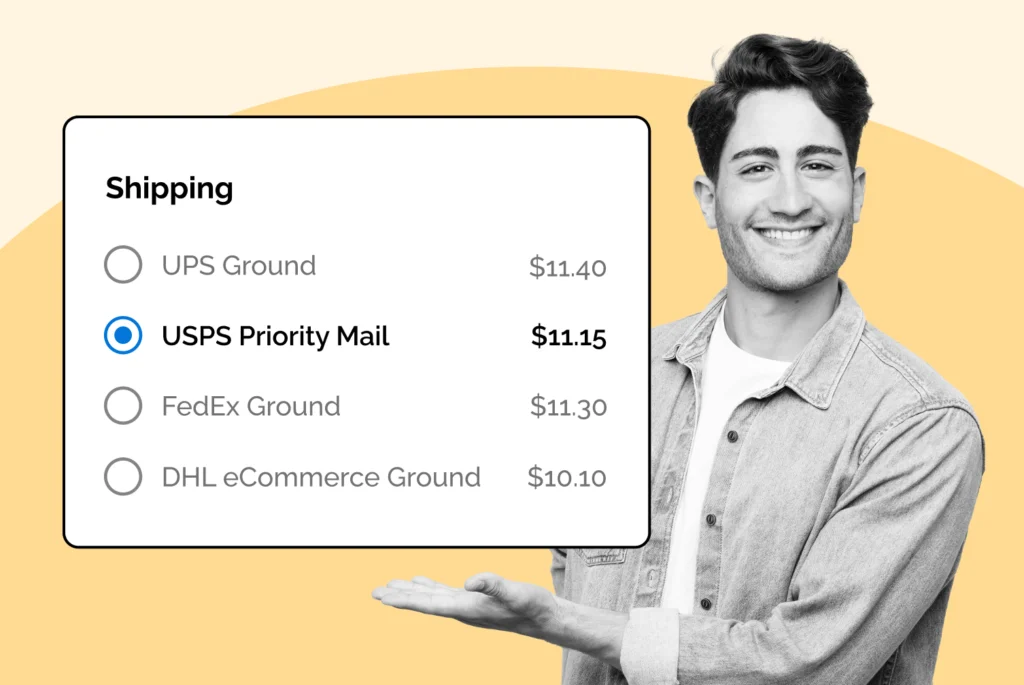
Learn how to accurately calculate shipping costs with our essential guide. Get practical tips and tools to ensure your estimates are spot on.

Discover effective strategies to turn BFCM returns into profitable opportunities. Boost your revenue this season.
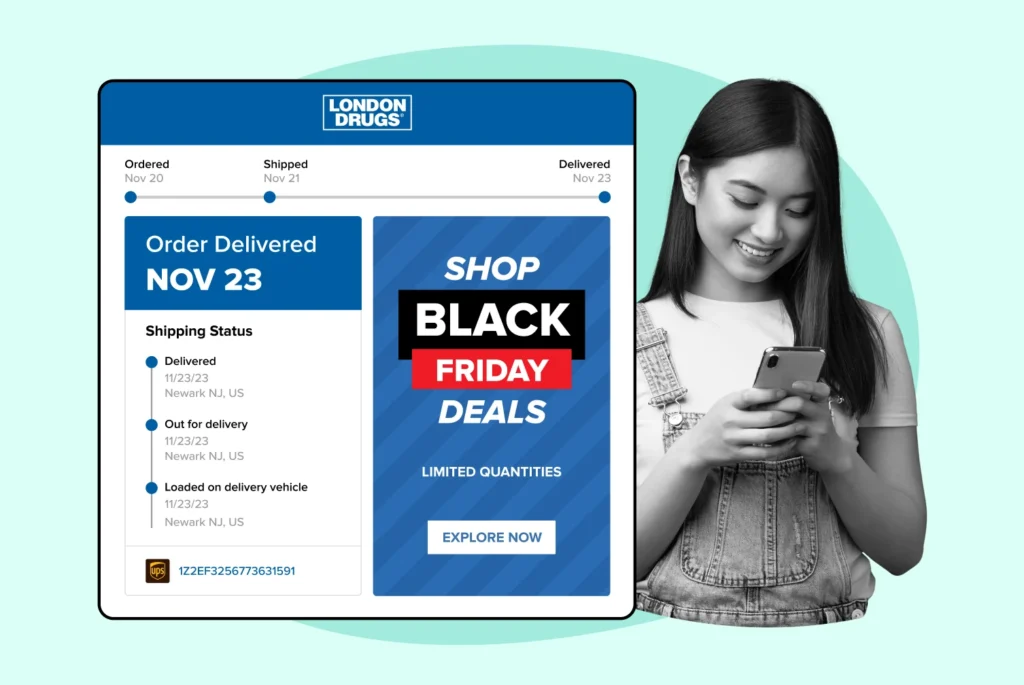
Discover effective BFCM shipping strategies to enhance your sales this holiday season. Maximize efficiency and delight your customers.
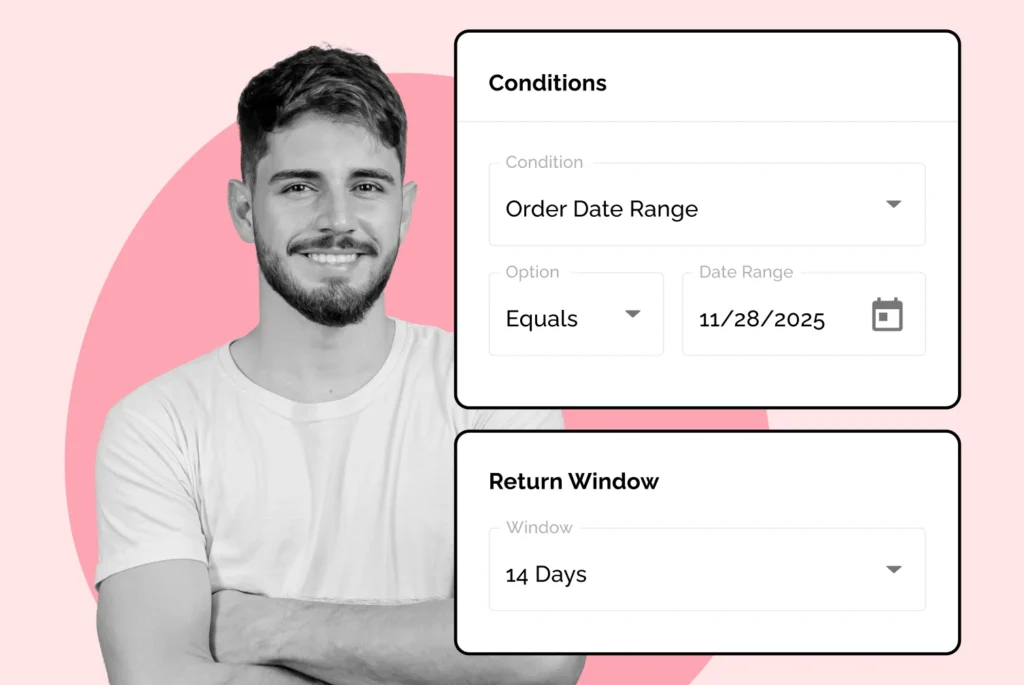
Discover essential strategies to streamline bulk returns handling and enhance efficiency. Read the article for practical tips!